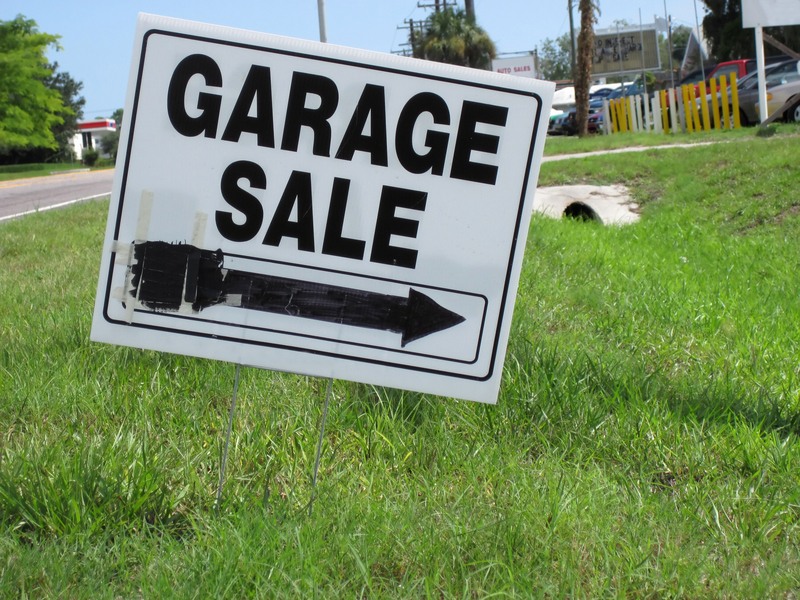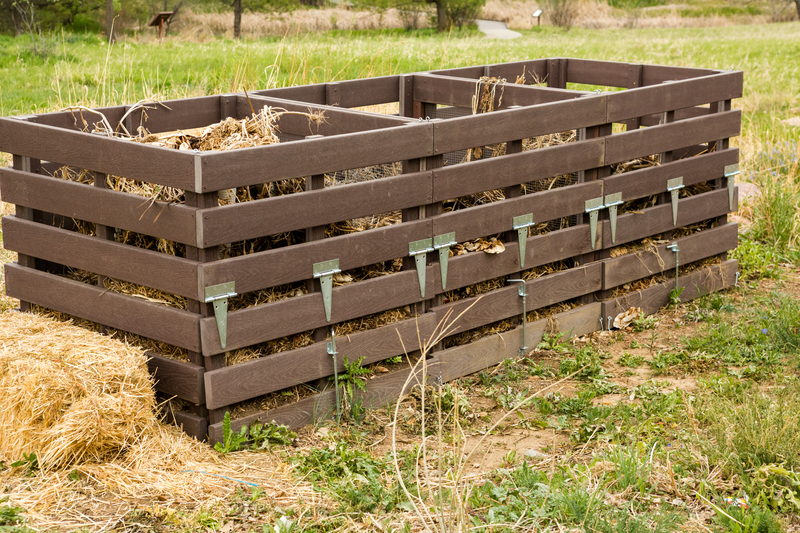Creating Paths for Pots and Pans Recycling
In the fast-paced world of modern kitchens, pots and pans are indispensable tools. But what happens when these once-trusty companions reach the end of their lifespan? Instead of becoming landfill clutter, there are excellent ways of creating paths for pots and pans recycling. This comprehensive guide explores innovative methods, practical steps, and recycling-friendly practices to ensure that old cookware is transformed into valuable resources rather than environmental burdens.

Why Recycle Pots and Pans?
Recycling pots and pans is more than a matter of environmental consciousness. It's about making sustainable choices that positively impact resource utilization, reduce waste, and contribute to a circular economy. Here are critical reasons to create paths for recycling cookware:
- Resource conservation: Most pots and pans are made from recyclable metals like aluminum or stainless steel, which can be endlessly reused without quality loss.
- Energy savings: Recycling metals uses significantly less energy than mining and refining new ones.
- Landfill reduction: Diverting cookware from landfills extends their useful life and decreases environmental pollution.
- Economic opportunities: Recycling creates jobs and supports industry sustainability.
Types of Pots and Pans Suitable for Recycling
Before you begin your cookware recycling journey, it's crucial to know which items qualify. Not every pan or pot is made equal in the eyes of recyclers. Here's a breakdown:
- Aluminum pots and pans (often lightweight and silver)
- Stainless steel cookware (durable, rust-resistant)
- Copper-bottom pans
- Cast iron skillets and Dutch ovens
Beware: Non-stick coatings (like Teflon) and handles made of plastic or wood sometimes present challenges to recyclers. However, many scrap yards will accept these as long as you remove non-metal parts.
How to Prepare Pots and Pans for Recycling
Efficient recycling paths for kitchenware start with proper preparation. Here's a practical checklist for prepping your old cookware:
- Remove plastic or wooden handles: Use a screwdriver to detach any non-metal components.
- Check for excessive food residue: Give your pots and pans a quick wash. Avoid contaminating recycling streams.
- Sort by material: Keep aluminum, stainless steel, and cast iron separate for easier processing at recycling centers.
- Don't worry about dents or scratches--recyclers accept all conditions!
Pro Tip:
If your pan has a ceramic coating, contact your local recycling provider for advice. Not all facilities accept ceramic, and mixing materials can reduce recycling efficacy.
Where Can You Recycle Old Pots and Pans?
A vital element in creating paths for cookware recycling is locating the right facilities. Here's where to look:
1. Local Scrap Yards
- Most scrap metal dealers happily accept cookware for recycling.
- They separate metals by type, ensuring efficient reuse.
- Tip: Call ahead to confirm which materials are accepted and whether you need to strip handles or lids.
2. Municipal Recycling Centers
- Many towns include metal recycling in their curbside or drop-off programs.
- Check your local government website for details on which kitchen items are allowed.
3. Retailer Take-Back Programs
- Some major kitchenware brands and stores--like Williams Sonoma or Sur La Table--offer pan and pot recycling events.
- These programs may even offer discounts for bringing in old cookware!
4. Donation and Reuse Centers
- If your cookware is still functional, donate to thrift shops, shelters, or community kitchens.
- This extends the lifespan and postpones recycling until absolutely necessary.
Innovative Ways to Repurpose Old Pots and Pans
Sometimes, the best path for old pots and pans is creative reuse. Consider these green alternatives before recycling:
- Garden planters: Drill a few drainage holes, fill with soil, and plant flowers, herbs, or succulents.
- Wall decor: Paint old pans and hang them in your kitchen as unique art pieces.
- Mosaic base: Use battered skillets as canvases for ceramic tile artwork.
- Pet food dishes: Large, shallow pans make sturdy bowls for outdoor pets.
Upcycling Resources
For DIY enthusiasts, numerous websites and YouTube channels offer step-by-step guides to transform old kitchenware into treasures. Upcycling reduces waste and gives new life to objects otherwise destined for the bin.
Challenges in Pots and Pans Recycling
Despite the clear benefits, certain barriers to efficient recycling persist:
- Mixed materials: Pots with plastic, glass, or rubber parts require disassembly--which not everyone does.
- Non-stick coatings: Teflon and similar substances can interfere with metal melting processes.
- Awareness deficits: Many consumers do not realize cookware can be recycled or repurposed.
- Lack of consistent local guidelines--some municipal programs exclude large kitchenware entirely.
How the Industry is Addressing These Obstacles
- Keen manufacturers are designing pans that are 100% recyclable, with fewer mixed materials.
- Recycling centers increasingly publish clear instructions for prepping and sorting household metals.
What Happens to Recycled Pots and Pans?
One of the most fascinating parts about recycling paths for pots and pans is witnessing waste become new resources. Here's how it works:
- Sorting: Centers separate metals from non-recyclables and group by type (aluminum, steel, etc.).
- Shredding: Cookware is ground into small fragments for easier processing.
- Melting: Metals are melted at high temperatures, removing impurities.
- Refining and forming: The purified metal is shaped into ingots, ready for manufacturing.
End products include:
- New cookware, cans, and automotive parts
- Construction materials like beams and panels
- Consumer electronics and appliances
Best Practices for Sustainable Cookware Use
Creating a closed loop for pots and pans recycling starts with smart purchasing and management. Here are top tips for sustainable cookware use:
- Choose durable, repairable materials: Opt for stainless steel, cast iron, or copper when buying new.
- Avoid non-stick coatings that wear out quickly and complicate recycling.
- Follow care instructions to maximize lifespan--season cast iron, avoid metal utensils on coatings, and store properly.
- Donate or sell unwanted but usable pots to keep them in circulation.
- Research local recycling programs before discarding broken cookware.
The Growing Importance of Responsible Recycling
With global scrap metal needs on the rise and sustainable practices gaining priority, creating paths for kitchenware recycling is more vital than ever. The following trends are shaping the future:
Manufacturer Initiatives
- Brands are using recycled materials in new products--look for labels like "made with recycled content."
- Some companies offer lifetime warranties and repair services to decrease disposals.
- Retail stores often lead local recycling drives--check their websites for upcoming events.
Consumer Awareness Campaigns
- Governments and NGOs sponsor information campaigns highlighting how and why to recycle pots and pans.
- School programs and community workshops teach responsible disposal and creative reuse.

Frequently Asked Questions About Pots and Pans Recycling
Can I place old pots and pans in my curbside recycling bin?
Not always. Many curbside programs only accept small metal items. Large or bulky cookware might jam sorting machinery. Always check your local rules or opt for drop-off at a scrap yard.
What do I do with non-stick or coated cookware?
Contact your recycler. Some facilities accept these items but may require removal of coatings, especially if Teflon or ceramic is involved.
Is it worth recycling one or two pans?
Absolutely! Every bit of metal diverted from landfills counts. If visiting a scrap yard, consider collecting with neighbors for a larger, more efficient batch.
Are pans with plastic handles accepted?
Usually, yes--if you remove and dispose of the non-metal parts. Some centers will do it for you, but be courteous and check their guidelines.
Conclusion: Paving the Way for a Greener Future
Creating effective paths for cookware recycling isn't just a community responsibility--it's a personal commitment to sustainability. By preparing, sorting, and correctly disposing of old pots and pans, you help conserve resources and pave the way toward a greener planet. Start by researching local facilities, reusing when possible, and educating others about the environmental power of proper kitchenware disposal.
The journey doesn't end at the recycling bin. Advocate for better recycling infrastructure, support companies with green initiatives, and share your upcycling successes online. In the grand scheme, every recycled pot and pan helps build a more sustainable, less wasteful world.
Take Action Today
- Sort your kitchen for unused or damaged cookware.
- Contact local recycling centers for drop-off options.
- Encourage friends and family to recycle or repurpose.
- Share this comprehensive guide to expand pots and pans recycling efforts!
With every step, you're not just disposing--you're creating environmentally friendly paths for pots and pans recycling that benefit your home, your neighborhood, and the planet at large.